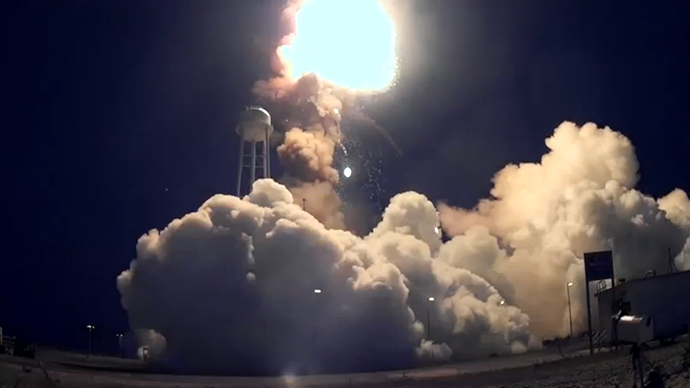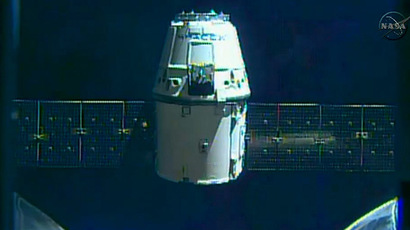Inside fireball: Close-up footage from the Antares Rocket explosion (VIDEOS)

Video footage from a rocket crash in Virginia a month ago has only just come to light, giving some spectacular close-up shots of the explosion. There were recordings from different angles to capture the moment the $200 million rocket went up in flames.
The supply rocket was supposed to be heading to the International Space Station to deliver payloads and other items. It belonged to the Orbital Sciences Corporation and took off from NASA’s Spaceport at Wallops Flight Facility in Virginia. Everything seemed to be going to plan for the first few seconds, until disaster struck.
Normally photographers are allowed to pick up their cameras just a few hours following a rocket launch. However because of the crash, an investigation was required, which meant all the camera equipment was impounded by the Accident Investigation Board as it may have helped to identify what caused the explosion, which happened on October 28.
One of the people closest to the action on that day was launch photojournalist Elliot Severn. The seasoned photographer described the moment when the 40 meter Antares rocket went up in flames.
“The initial liftoff looked flawless. Then, suddenly, the exhaust turned bright yellow and became far brighter than usual. That’s when we knew things were about to get bad. The vehicle seemed to hand in the air and started to burn, it was like watching a train wreck in slow motion. It fell in a pillar of fire and exploded on impact, and we could feel the heat on our face from 1.5 miles away. Seconds later the shockwave hit, and we all ran for the buses to evacuate,” the website IFL Science reported.
All the cameras were remotely operated so there was no chance of any human casualties following the accident. Some footage from inside a cloud of dust is even visible, as well as some of the debris.
There was around $200 million of cargo, which weighed 2.5 tons on board, which was all completely destroyed in the explosion. The crash was preliminary blamed on the failure of one of the rockets two engines, though the investigation is continuing. The Orbital Sciences Corporation has a contract with NASA until 2016 to transport cargo into space.













